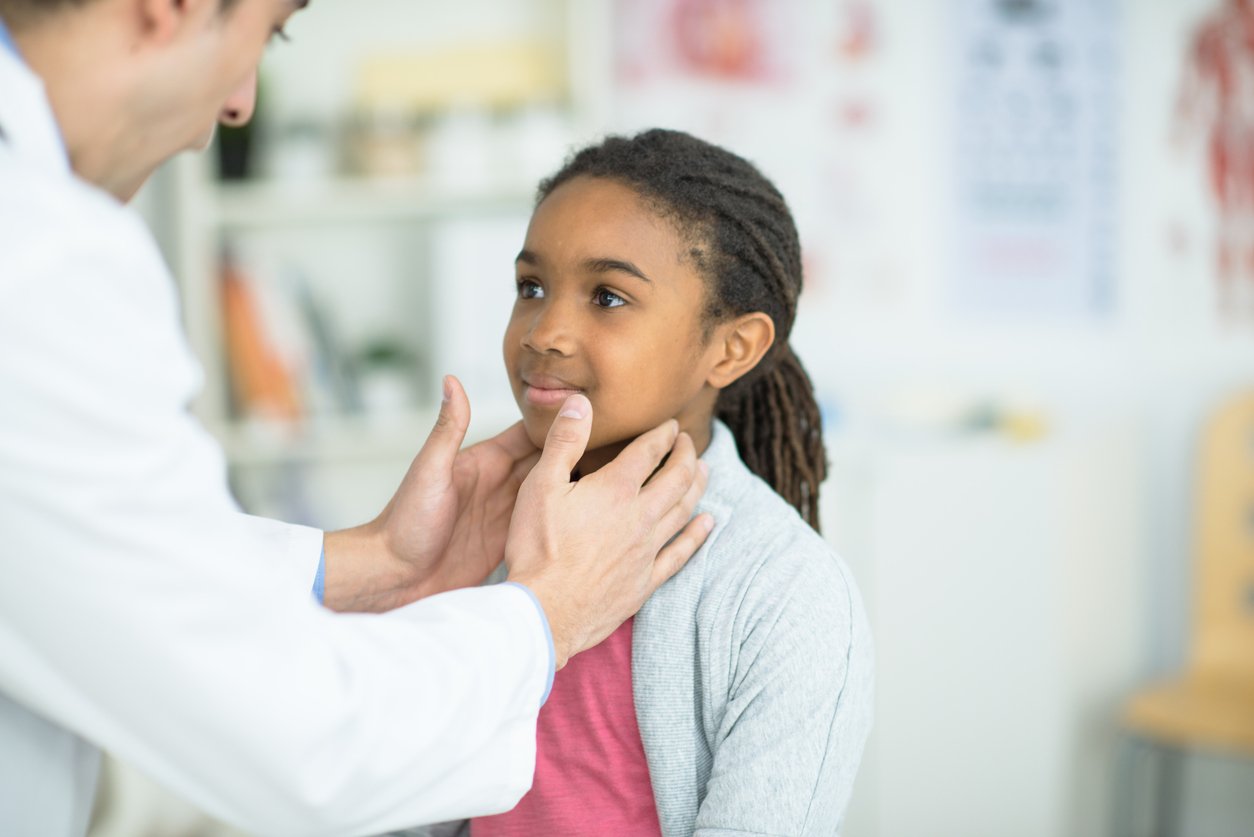What is puberty?
Puberty is a stage of development. It is when your child’s body starts to change into adult form. During puberty, your child’s brain releases hormones. Puberty is marked by physical changes. It involves the onset of sexuality and the ability to reproduce. Puberty enables your daughter’s body to get pregnant.
How does puberty affect girls?
In girls, puberty starts with growing breasts (called breast “buds”) and the growth of soft hair over and near the vagina. Breast buds are tender, hard bumps below the skin under the nipple area. Over time, the breasts begin to grow and swell. They will become less tender. Around the same time, your daughter will grow in height and weight. She will develop underarm hair and sweat glands.
The onset of the menstrual period occurs at the end of the puberty stage. Menstruation is the monthly discharge of blood from the uterus when there is no pregnancy. This causes bleeding from the vagina. This is the stage in a girl’s life when her body becomes capable of getting pregnant. During puberty, girls begin sweating more and developing body odour. They can also develop acne.
Girls may have new feelings. They may approach their parents and peers differently.
When does puberty start in girls?
The age at which puberty begins is unique for every child but breast buds usually begin between the ages of 8 and 13.
Most girls get their period about 2 years after the breasts start to form. On average, girls get their first menstrual period when they are about 12 or 13 years old. Some girls get their first period as early as 8 or 9 years. Others may not get it until their mid-teens.
By 15 or 16 years of age, a girl’s body will reach adult proportions. Young women have darkened nipples and areolae, the area around the nipples. They also have wider hips, coarse pubic hair, and thicker thighs.
See your daughter’s health-care provider if she starts to show signs of breast development before 8 years of age or if your daughter is not showing signs of puberty by age 13. Have your daughter assessed by her health-care provider if she does not have her first menstrual period by age 16.
How to help your daughter prepare for puberty
Open communication
Encourage your daughter to ask questions about puberty. She should feel free to ask without fear or judgment. Your daughter’s friends and social media should not be her only sources of education. If they are, she may receive some poor advice.
If your daughter has not brought up the topic as she nears her preteen years, start the conversation. You can begin by asking what she knows about puberty. Offer as much information as you think she needs to know. Numerous short talks can cover various topics. You may want to discuss basic hygiene, sexual maturity, and teenage pregnancy. It is important to discuss this stage of puberty with your child.
If you do not feel comfortable bringing up the topic, ask a female friend or relative to speak with your daughter. If your child has not brought up the topic as she nears her preteen years, start the conversation. Start by asking what she knows about puberty. Offer as much information as you think she needs to know. Numerous short talks can cover various topics. You may want to talk about basic hygiene, sexual maturity and teenage pregnancy. It is important to discuss this stage of puberty with your child to reassure her about the changes that are occurring in her body.
Prepare before puberty
Your daughter’s transition into puberty will be a lot smoother if you help her prepare. Discuss the stages of puberty before she goes through them. Also, discuss the “tools” your daughter will need to manage the signs of puberty. For example, she may want to start wearing a bra and she will need to know how to use underarm deodorant and feminine products for her period once it arrives. Pimples, or acne, may also be an issue for your child. If the pimples are bothersome, seek help from your child’s health-care provider.
Growing independence
Puberty is a stage that begins adolescence. With puberty comes growing independence. Your daughter may start to argue with you more. She may become more disagreeable. She may have mood swings. At times, she may want to be by herself.
It is best to encourage communication. Try to show your daughter that you love her unconditionally. Also, be sure to maintain order and routine in the home. You may need to use different rules or approaches to discipline as your daughter goes through puberty and tests your limits.
Masturbation
Masturbation means touching one’s own genitals. Masturbation is normal and can be done at any age. There is no harm in masturbation.
Masturbation can lead to a feeling of pleasure and relaxation. It is more common in older children, preteens, teenagers, and adults. Girls who masturbate do so because it feels good and should not be scolded or made to feel ashamed of doing so. This can lead to problems with sexuality and self-esteem later in life. Instead, tell your child that masturbation is OK but it is a private matter.
Emotional and sexual changes
Puberty involves heightened hormones in the body. There will be new feelings toward peers, and sexual curiosity. Your daughter may have sexual thoughts or feelings. Many of her peers will talk about sex and some may have sex.
Physical and emotional risks
There are physical risks associated with unprotected sex. Explain to your daughter that pregnancy may occur when sperm fertilizes a girl's or woman’s egg. Once a boy starts ejaculating sperm, he is able to father a child with a girl who has begun menstruating. Discuss the importance of birth control options with your daughter and about using condoms during oral sex or intercourse. This can help prevent sexually transmitted infection.
There are also emotional risks associated with sex. Issues of jealousy, insecurity, trust, and faith can arise when teenagers become sexually active. Many girls are coerced into becoming sexually active before they are emotionally ready. As a result, they may lose self-esteem and have a lower sense of self-worth. Talk to your daughter about the emotional risks associated with having sex and the importance of providing consent. You can discuss this with her or you can have her health-care provider engage in a conversation.

